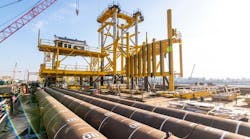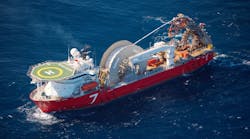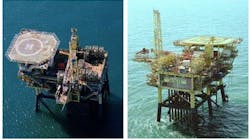Ian Verhappen
Industrial Automation Networks Inc.
Pipeline integrity has always been a critical issue. The US has more than 2.5 million mi (4 million km) of pipe distributing hydrocarbon fluids across the country. Despite the fact that new proposed pipelines such as Keystone XL have become political lightning rods, pipeline operators are continuously managing 185,000 mi (298,000 km) of liquid petroleum pipelines, nearly 320,000 mi (515,000 km) of gas transmission pipelines, much of it offshore.
However, like an airline accident "makes the headlines" versus the number of vehicular accidents per day, a pipeline event is far more "newsworthy" than a similar spill from a transport truck. This is in part because special interest groups can get headlines with a 20 second sensational sounding clip for which an explanation of any sort requires three to 10 times as long, which by that time the "appeal" or attention span no longer exists. Unfortunately, this is the present reality – while the current state of much of the abovementioned infrastructure nears end of life.
As some pipeline infrastructure approaches 50 years in the ground, in swamps, under rivers, or subsea, it is no surprise that corrosion causes 15%-20% of all significant pipeline incidents. Fortunately, technology helps to reduce this number. Leak detection systems based on algorithms, sensors using fiber optics and continuous corrosion monitors provide real-time measurement of pipeline integrity, and smart pigs inspect the reliability of the pipe.
The real-time sensors are continuously monitored from remote control centers that are equipped with computerized sensing and control systems, including automatic leak detection alarms and shut-off devices in case of emergency. These control systems are normally widely distributed along the length of the pipeline and use a number of technologies to enable each local controller node to communicate to the central control room.
There are a number of organizations that develop standards for the various parts of the pipeline design process such as American Society for Testing and Materials (ASTM) for the pipe and fittings, American Petroleum Institute (API) for materials handling and a new cybersecurity document, American Gas Association (AGA) for measurement, and of course the various national regulators as well.
One US-based group dedicated to improving the integrity of pipelines is the Pipeline Research Council International (PRCI) that was established in 1952 as the Pipeline Research Committee of the AGA to address the problem of long-running brittle fractures in natural gas transmission pipelines. Since its inception, PRCI has served as a collaborative forum for industry to jointly investigate and solve a range of problems in the areas of corrosion location and assessment; mechanical damage location and assessment; right of way monitoring; growth of construction defects; compressor and pump stations; and measurement bias reductions for custody transfer. The funding for PRCI's research programs comes from the pipeline industry through the annual subscriptions of member companies. In addition to the allocation by members of their subscriptions, members may also contribute supplemental funding to programs they determine worthy of commitment.
One document that will affect pipeline integrity is the recently released PRCI "Industry Guidelines for Subsea Pipeline Integrity Management" (SPIM). The SPIM guidelines are intended to provide operators with a structured, comprehensive approach to the integrity management of subsea pipeline system for any stage of field life. The guidelines developed by PRCI require that the operator demonstrate how the seven elements of the SPIM guideline will be met: planning; competence and accountability; communications; information management; management of change; performance assurance and learning; and preparedness and emergency response.
Pipeline integrity starts with planning. This includes the initial design following proper standards including construction criteria to prevent damage to the line itself or any of the other pipelines in which it may come near. The planning and approval process will also include the systems for monitoring, inspections, and maintenance protocols. Part of the design includes sufficient wall thickness to not only contain the stresses of the line pressure but also to provide sufficient corrosion allowance to extend the life of the pipeline. Additional line integrity is provided through proper selection of the pipeline coating with specially designed materials to protect against corrosion and environmental damage.
The PRCI industry guidelines apply to subsea pipeline systems that transport gas, oil, water, or provide any other subsea service. The SPIM documents are intended to cover production, transmission, and off-loading systems for all parts of the physical subsea facilities through which fluid is transported – including flowlines, risers, jumpers, manifolds, pipeline end manifold (PLEM), pipeline end termination (PLET), umbilical systems, subsea distribution units, valves, control modules, pumps, and separators.
The other elements of the SPIM guideline build off the initial plan and design to support safe reliable operations of the facilities and systems for the remainder of the pipeline life cycle.
With approximately 27,000 mi (43,000 km) of operating pipeline in the Gulf Coast and an additional 18,000 mi (29,000 km) of pipe "out of service," the integrity of these systems is an important part of not only bringing approximately half of the country's conventional oil to the processing facilities located onshore while also protecting the ecosystems through which they pass but also in the process guaranteeing a social license to operate and thus provide livelihoods to everyone working in the region whether that be as a fisherman or a member of the hydrocarbon industry.
The author
Ian Verhappen, P.Eng. is an ISA Fellow, ISA Certified Automation Professional (CAP), Automation Hall of Fame member, and a recognized authority on process analyzer sample systems, Foundation Fieldbus and industrial communications technologies. Verhappen provides consulting services in the areas of field level industrial communications, process analytics, and hydrocarbon facility automation. Feedback is always welcome via e-mail at[email protected].
Reference
http://prci.org/index.php/site/projects_single/subsea_pipeline_integrity_management_best_practices/




